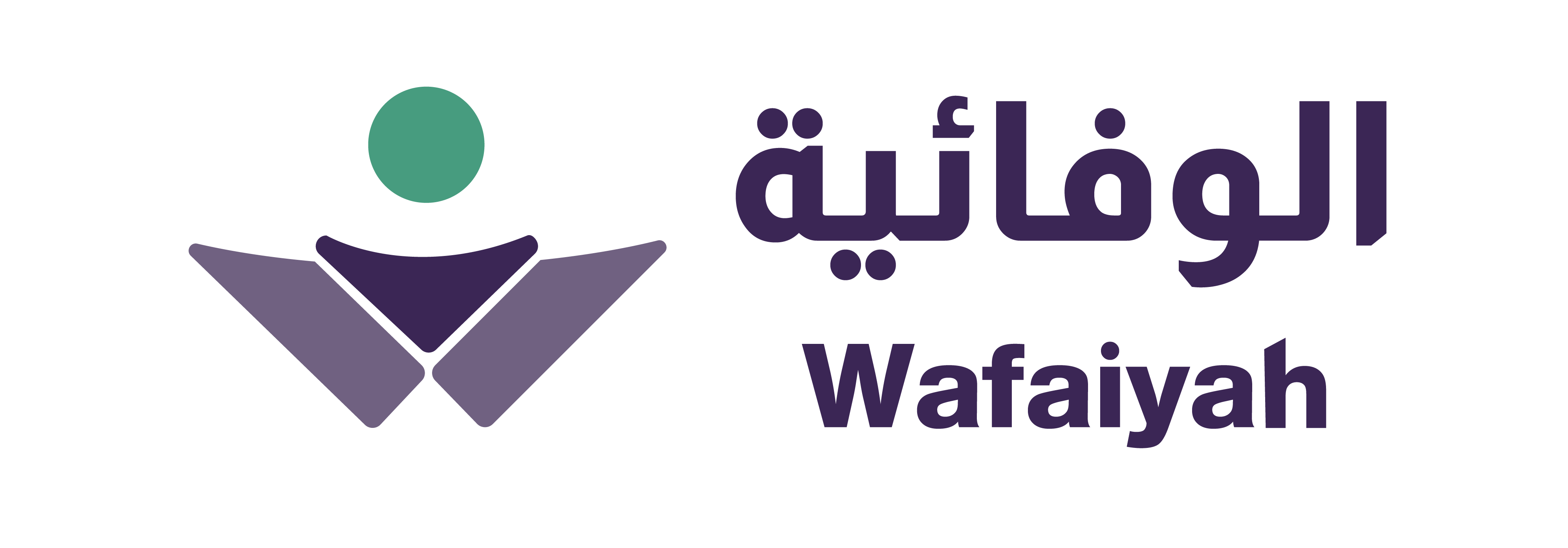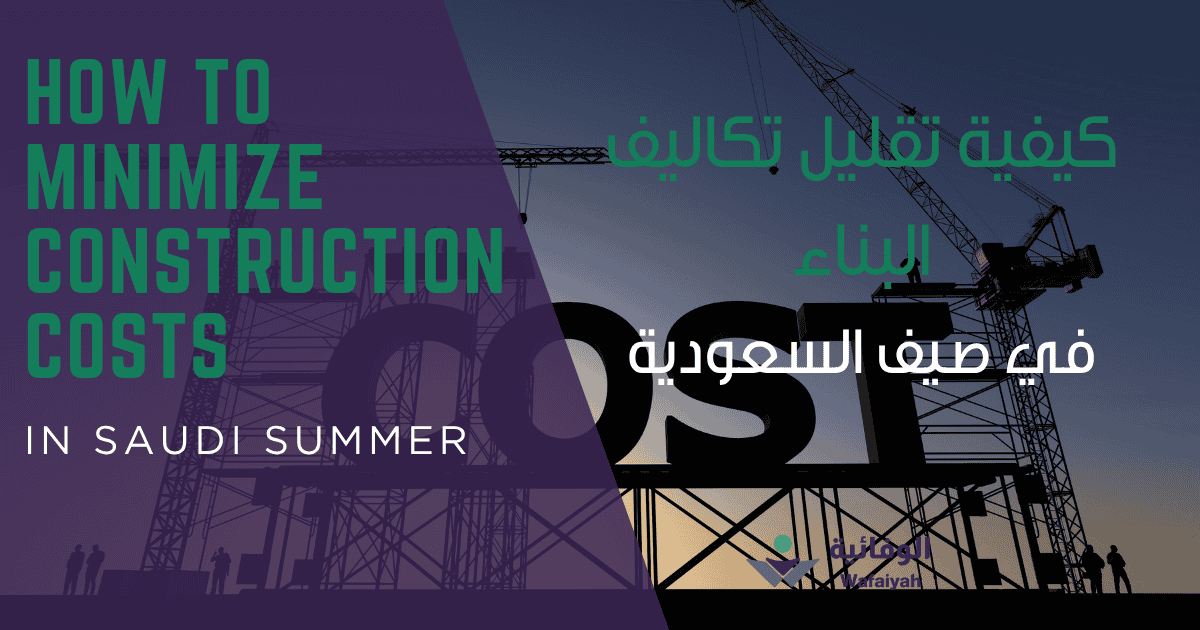Construction in Saudi Arabia faces unique challenges, especially during the extreme summer months when temperature reaches between 45–50°C. Such high heat can hugely affect labour productivity, as workers tire quickly and may face health risks. Materials like concrete and asphalt can get weak, while equipment may overheat, causing delays. These issues can increase project costs and extend timelines. Wafaiyah understands these difficulties and is committed to helping builders overcome them. This guide offers practical strategies to manage and reduce construction costs during the intense heat of summer, ensuring safety and timely project completion even in the most demanding conditions.
The excessive summer heat in Saudi Arabia can have a significant impact on construction work and its cost. Saudi Arabia generally witnesses the summer season at a maximum of 45–50°C, during which time handling outdoor construction tasks is no less than a nightmare. It reduces worker productivity and damages the equipment, which causes a delay in project completion. Above all, tools and construction machinery can also wear out faster, after which an extra cost is involved for replacement and repairs. The Saudi government has limited the working rules during peak heat hours, which we will discuss in the above sections. However, these restrictions do come with the drawback of labour shortages and scheduling issues. To handle such situations, companies should invest in cooling systems, shaded rest zones and protective gear. The harsh summer climate makes construction slower, costlier, and more challenging for developers.
To tackle Saudi Arabia’s hot summer, smart planning is essential to avoid letting the costs go up. In a construction project, filling concrete and laying foundations are quite complex tasks. The best approach is to handle the difficult activities during cooler months. This will help to avoid any uncertain delays occurring during project completion. Meanwhile, you can also predict possible setbacks and maintain the budget by using modern project management tools. The budget should include cooling stations, longer breaks and shaded zones. Similarly, it is equally vital to choose building materials that can perfectly handle high temperatures. Go for the finishing options that don’t melt and precast concrete components. Planning is essential to keep the project on track and cut down on extra expenses.
Use Heat-Resilient Construction Techniques and Materials
Use Heat-Stable Materials
Amid Saudi Arabia’s extreme heat, certain building materials can fade, weaken or crack over time. It is always the best option to go for heat-stable materials that know how to survive even in high temperatures. Using UV-resistant coatings helps to protect surfaces from sun damage. Similarly, temperature-resistant composites can survive for a long time, help cut down extra expenses and avoid work delays.
Prefabrication Techniques
Prefabrication involves making building components off-site in a controlled environment, then assembling them on location. This method reduces the need for on-site labor during peak heat, speeding up construction while protecting workers from extreme temperatures. Prefab construction also lowers material waste, minimizes rework, and helps projects stay on schedule despite summer challenges.
Advanced Cooling Systems
Effective cooling solutions improve worker safety and productivity. Misting fans, shaded rest areas, and industrial cooling systems reduce heat stress and fatigue. Providing hydration stations and scheduling extra breaks during peak temperatures also helps. These measures not only prevent heat-related illnesses but also improve efficiency by keeping workers comfortable and focused.
Smart Equipment
Construction equipment must withstand Saudi Arabia’s harsh summers. Machines with insulated cabins, advanced cooling systems, and fuel-efficient engines perform better in high temperatures. Heat-resistant machinery lasts longer, reduces downtime from overheating, and lowers maintenance costs. Investing in smart, climate-adapted equipment ensures smoother operations and uninterrupted work during the hottest months.
Smart Tips to Improve Labor Productivity in Extreme Heat
Seasonal Planning
Schedule large construction jobs such as concreting and roof work when temperatures are cooler. Performing tasks during milder weather protects the team from heat risks and creates better results. Smart schedule decisions prevent delays in projects and help them stay on schedule. It is essential to set the schedule based on good weather availability.
Work Hours Scheduling
Shift your working time before and after the midday sun to let the worker feel comfortable without any extra heat exposure. New work timings not just make the worker comfortable but also reduce the health risks. Using cooler periods helps employees do their work more productively. It is essential to favour operational methods that reduce the time workers must work in hot conditions.
Split Shifts
Organise work in multiple sessions to spread employee hours through cooler parts of the day. By setting up shifts, you can lower the safety risk for our workers while maintaining project completion. The division of work keeps teams productive throughout the day without becoming too hot. Always support different shift hours to achieve better results while protecting worker health.
Midday Break Compliance
You must follow Saudi labour laws by limiting the outdoor work between noon and 3 PM from June through September. This practice protects the workforce from extreme heat and helps us evade both legal consequences and financial penalties. It is essential to follow the safety rules because they protect your staff and project operations.
Outlook on Modern Technology to Reduce Construction Costs
Undoubtedly, technology plays a fundamental role in protecting construction work from the intense summer heat. For site monitoring, drones are useful tools since they allow real-time photos and videos to track development without requiring workers to be physically present. This reduces the possibility of heat-related stress and maintains effective work supervision. Automated systems also help to reduce the demand for manual labour. Automated watering systems can regulate dust levels on-site without putting personnel in direct heat exposure.
Another quite useful technique is building information modelling (BIM). By producing a 3D digital replica of the project, BIM helps teams to better coordinate and identify problems early on. Even in cases of weather-related delays, this reduces the pressure of rework, saves materials, and maintains projects running on schedule. Even in Saudi Arabia’s hardest summer months, building firms can increase safety, save costs, and complete projects on time by using innovative technology and automation. This strategy not only safeguards employees but also ensures dependability and efficiency of the whole building process.
Conclusion
Summing up, advanced technology, proactive planning and smart labour safety measures lower summer construction expenses. Successful management methods help to handle Saudi Arabia’s challenging summer conditions very effectively. Wafaiyah enables these initiatives by enforcing construction approaches that combine efficiency with safety alongside forward-thinking solutions. Construction companies should embrace summer rather than fear it because intelligent business choices during this season create lasting business gains in the building sector.
Frequently Asked Questions
What is the midday work ban in Saudi Arabia?
The midday work ban in Saudi Arabia prohibits outdoor labour between 12 PM and 3 PM from June to September to protect workers from heat-related illnesses.
How can extreme heat affect construction materials?
Extreme heat can cause materials like concrete and asphalt to set too quickly, affecting strength and durability, while others may soften or degrade under high temperatures.
What are the best construction materials for summer in Saudi Arabia?
Fast-setting concrete, UV-resistant coatings, and temperature-stable composites are ideal for construction in Saudi summer, offering better performance under extreme conditions.
How can I improve worker productivity during the summer heat?
Provide hydration stations, shaded rest areas, and staggered shifts to help workers stay calm and safe, maintaining productivity despite the heat.

